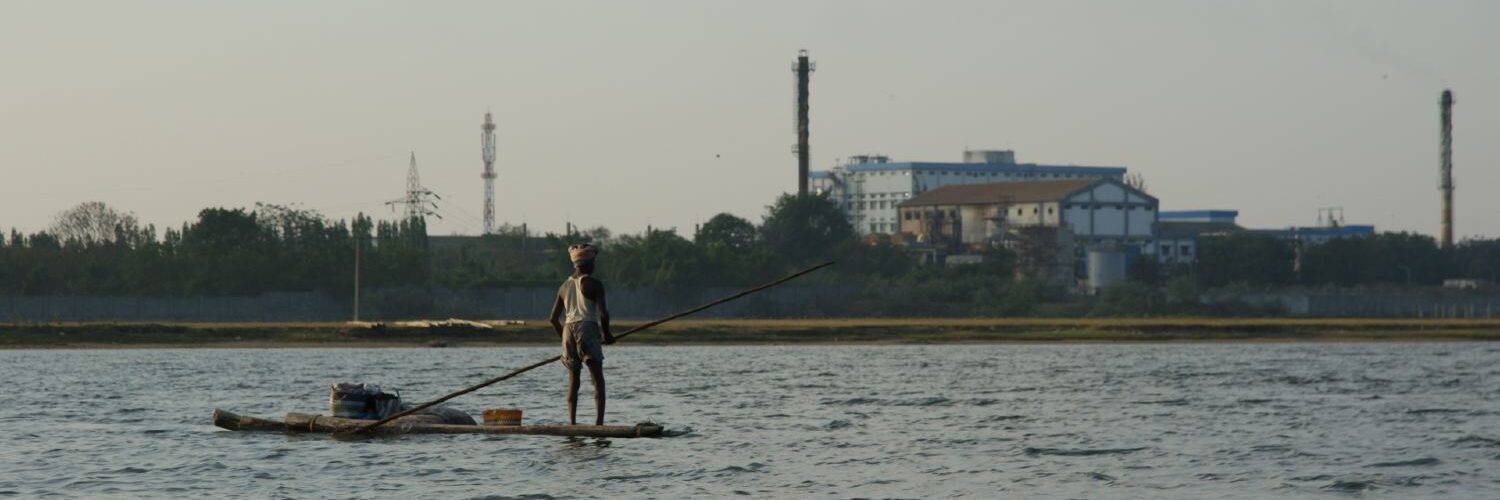Daily Excelsior
Sept 21, 2004
CHENNAI, Sept 21: The industrial area of State Industries Promotion Corporation of Tamil Nadu (SIPCOT) in the Cuddalore district has been declared a global toxic hotspot by environmentalists after a finding that the air in the area contained extremely high levels of at least 22 toxic chemicals including eight cancer-causing ones.
According to a report released by the SIPCOT area community environment monitors, the results of five samples taken outside the factories of Shasun, Tagros, Cusecs 5 and Asian paints confirmed the worst fears of the nearby villagers that the incidents of frequent odour they experienced were indicators of chemical pollution from factories. At least 13 chemicals found were used as raw materials in SIPCOT industries, the report added.
This is the first time in India that the air breathed by people living near industries had been tested for toxic gases, such as volatile organic compounds and sulphur compounds.
Terming the SIPCOT area in Cuddalore as a “slow-motion Bhopal,” it further said at least 14 of the 22 chemicals, including trichloroethene, carbon tetrachloride, acrolein, methylene chloride and hydrogen sulphide violated the US Environmental Protection Agencys (US EPA) safety levels.
While 1,2-dichloroethane, a cancer-causing chemical that was found in an air sample taken downwind of tagros chemicals, exceeded safety levels by a factor of 22,973, levels of hydrogen sulphide, a gas that smells of rotten eggs, in the air sample taken downwind of cusecs pump house no five was 874 times the US EPA safety level, it said.
The findings had very troubling implications particularly for women, children and old people who spend all their time within the polluted confines of SIPCOT.
“Children, foetuses and pregnant women are most at risk of exposure. These chemicals can attack children at a very vulnerable stage of development and may, in cases, permanently damage their ability to fight diseases or their mental, physical and sexual development,” the community environmental monitoring programme coordinator Shweta Narayan said.
Mr Denny Larson of the US-based global community monitor, one of the key persons involved in developing and testing the bucket technology to take air samples, said the levels of some of the chemicals were at least 1,000 times higher than what was seen in other developing countries like South Africa, Thailand and the Philippines.
“I have worked for nine years with the bucket and seen at least 500 results from different places around the world. But, SIPCOT, Cuddalore, has to be the smelliest place and certainly the worst that I have seen in terms of the kinds and levels of toxic gases in the air,” he added.
The report alleged that despite the magnitude of the problem, not a single health study had been conducted till date in sipcot, cuddalore. The Pollution Control Board (PCB) did not monitor for toxic gases in the industrial estate and had not released to the public the basic data it had on air pollution.
“The PCB and the Tamil Nadu Government have ignored our complaints about nasty odours and our health problems,” Mr S Ramanathan, a community environmental monitor from Semmankuppam village, claimed.
Despite the demonstrated lack of capacity of the PCB or the Health Department to understand the pollution problem and initiate action to protect public health, the Government was adding to the pollution load in sipcot by allowing more polluting units to come up.
Villagers of Semmankuppam and Sangolikuppam had expressed their unhappiness about the setting up of a new company, Pandian chemicals, in SIPCOT phase II. The company had planned to manufacture 38 tonnes/month of ammonium perchlorate, a highly explosive chemical used in rocket fuel and a problematic groundwater contaminant that was dangerous even at low levels to foetuses, young children and pregnant women.
It could be passed on from mother to child through breast milk and was known to attack the brain development of the child, the report said.
The report titled gas trouble: air quality in sipcot, Cuddalore was compiled using samples taken by community environmental monitors from Semmankuppam, Sangolikuppam and Eachangadu villages.
The monitors were specially trained in the use of the bucket to take air samples and in monitoring, reporting and acting on pollution or occupational injury incidents.
The SIPCOT area community environmental monitoring was a project of federation of consumer organisations-Tamil Nadu and Pondicherry, global community monitor and the other media. (UNI)
